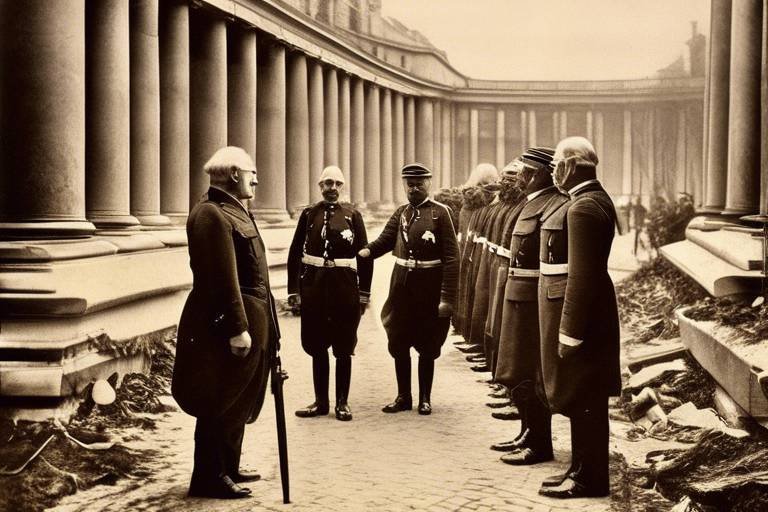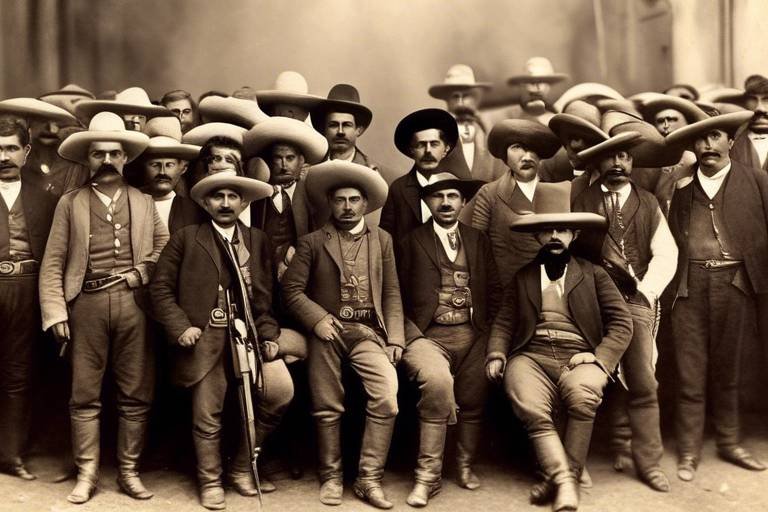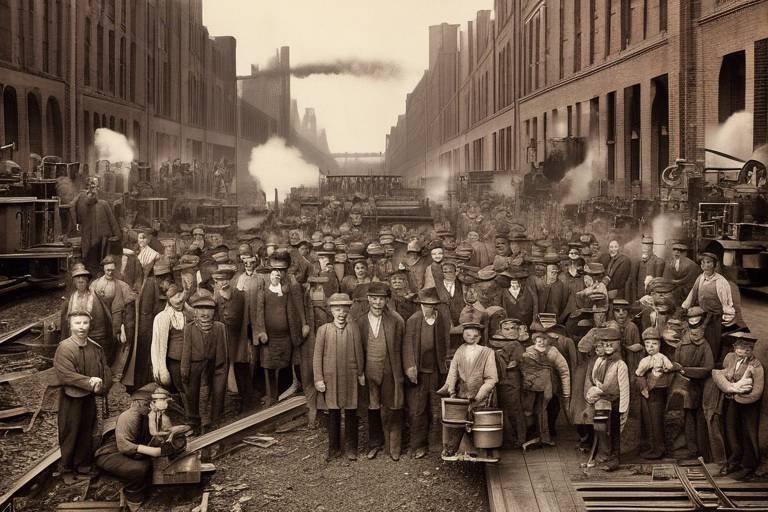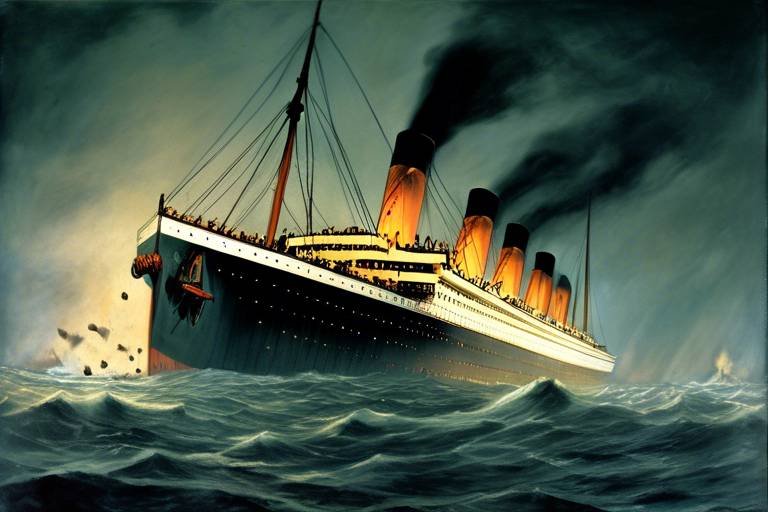The Fall of Constantinople - A Turning Point in History
The Fall of Constantinople in 1453 stands as a monumental turning point in history, forever altering the course of civilizations and heralding the end of the Middle Ages while ushering in the dawn of the Renaissance. This pivotal event, where the Byzantine Empire succumbed to the relentless siege by the Ottoman Turks, left an indelible mark on the world stage.
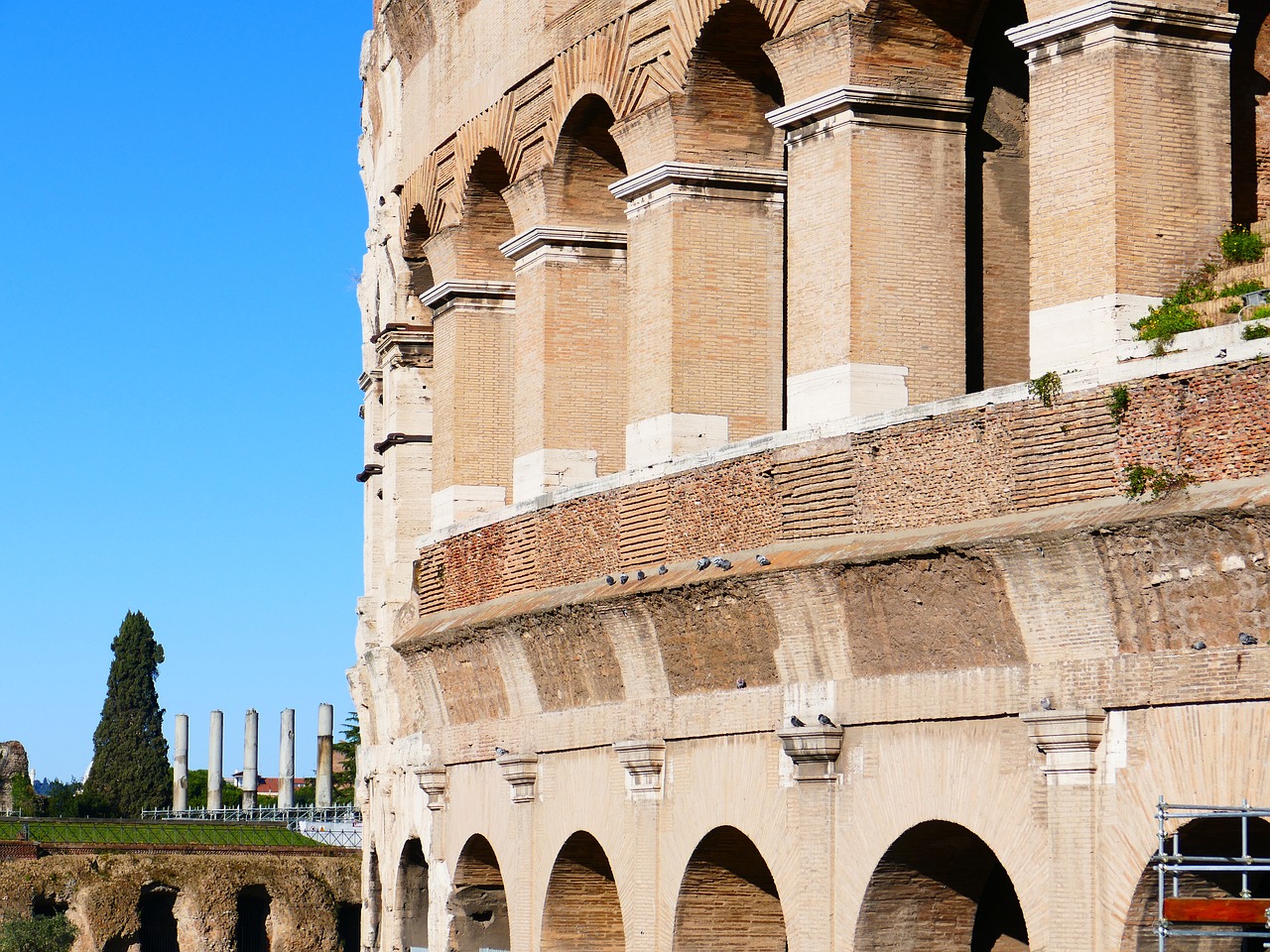
Background of Constantinople
Constantinople, known as Byzantium in ancient times, holds a significant place in history as the capital of the Byzantine Empire. Situated strategically between Europe and Asia, this city served as a vital bridge connecting two continents both geographically and culturally. Its location along the trade routes made it a bustling center of commerce and a melting pot of diverse influences.
The Byzantine Empire, with Constantinople at its heart, was a beacon of civilization, preserving and transmitting ancient Greek and Roman knowledge to the medieval world. The city's grandeur and architectural marvels, such as the Hagia Sophia, showcased the empire's wealth and cultural sophistication, attracting visitors from far and wide.
Throughout its history, Constantinople faced numerous sieges and threats, yet it stood resilient, fortified by its formidable walls and strategic positioning. The city's defenses, including the Theodosian Walls, provided a formidable barrier against invaders, earning Constantinople the reputation of being impregnable.
Emperors ruled from the opulent palaces of Constantinople, shaping the empire's policies and engaging in diplomatic maneuvers with neighboring powers. The city's rich tapestry of churches, markets, and public squares reflected the diverse population and vibrant social life of the Byzantine capital.

Lead-Up to the Siege
The lead-up to the siege of Constantinople in 1453 was a culmination of various factors that had been brewing for years, setting the stage for the eventual fall of the Byzantine Empire to the Ottoman Turks. One of the key elements that weakened the Byzantine Empire was internal strife and political instability. Constant power struggles and civil unrest had plagued the empire, leaving it vulnerable to external threats.
Furthermore, economically, the Byzantine Empire was struggling. Years of war and territorial losses had drained its resources, making it difficult to maintain a strong military presence and fortify its defenses adequately. This economic strain made it challenging for the Byzantines to withstand a prolonged siege.
Militarily, the Byzantine Empire had also been on the decline. The once formidable Byzantine army had dwindled in size and effectiveness over the years, making it difficult to defend against external aggressors. The lack of military prowess and modernization left Constantinople exposed to the growing power of the Ottoman Empire.
On the other hand, the Ottoman Empire, under the rule of Sultan Mehmed II, was experiencing a period of rapid expansion and consolidation of power. Mehmed II had ambitious plans to conquer Constantinople and establish his dominance over the region. The Ottomans had been steadily encroaching on Byzantine territory, gradually tightening the noose around Constantinople.
As tensions mounted between the two empires, it became increasingly clear that the fall of Constantinople was not a matter of if, but when. The lead-up to the siege was a period of uncertainty and fear for the Byzantines, as they faced the impending threat of a formidable enemy at their gates.

Ottoman Expansion
The Ottoman Expansion marked a significant period in history, characterized by the rapid growth and territorial conquests of the Ottoman Empire under the leadership of Sultan Mehmed II. As the Ottomans sought to expand their influence and power, Constantinople emerged as a key target due to its strategic location and symbolic significance.
Under the ambitious rule of Sultan Mehmed II, the Ottomans embarked on a campaign of territorial expansion, aiming to establish dominance over key regions in the Eastern Mediterranean and Balkans. The conquest of Constantinople was a crucial step in this expansionist agenda, as it would not only grant the Ottomans control over vital trade routes but also solidify their status as a major power in the region.
As the Ottomans advanced towards Constantinople, their military prowess and strategic planning became evident. Sultan Mehmed II's vision for the city's capture was meticulously planned, utilizing advanced siege tactics and weaponry to overcome the formidable defenses of the Byzantine Empire.
The Ottoman Empire's expansionist ambitions were fueled by a combination of military strength, economic resources, and a well-organized administrative system. This enabled them to effectively conquer and assimilate territories into their growing empire, transforming Constantinople into the thriving capital of the Ottoman Empire and marking a turning point in the history of the region.
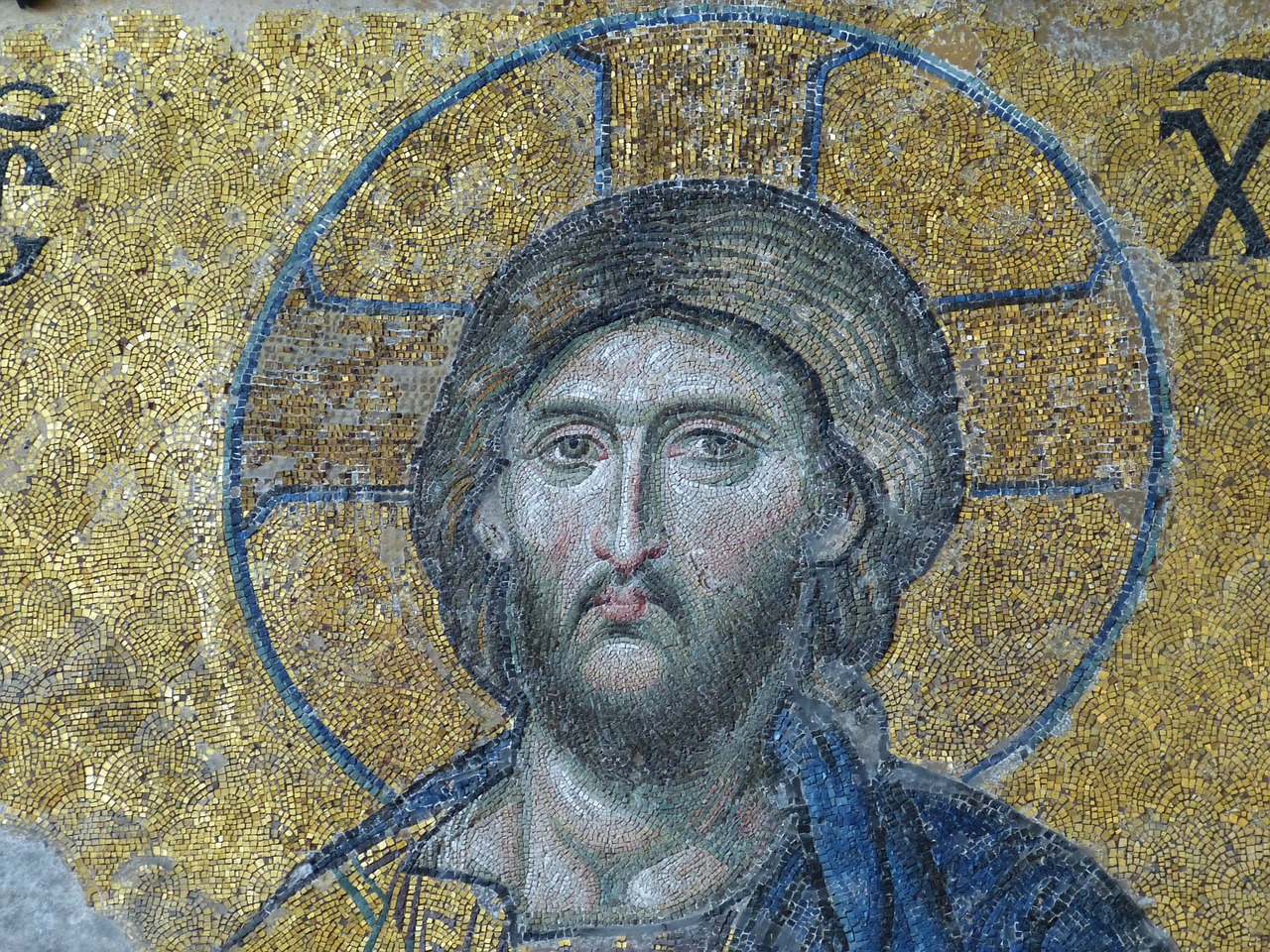
Defenses of Constantinople
When it came to defending Constantinople, the Byzantines knew they had to be strategic and innovative. The city's geographical location provided some natural defenses, with water surrounding it on three sides, making it challenging for enemies to attack by sea. To further fortify their position, the Byzantines constructed a series of impressive defensive walls that encircled the city, including the famous double walls built by Emperor Theodosius II in the 5th century.
These walls were not just ordinary barriers; they were a formidable obstacle for any would-be invaders. The outer wall stood at around 20 feet high and 12 feet thick, while the inner wall was even more imposing at 40 feet high and 20 feet thick. These walls were lined with towers and battlements, providing vantage points for archers and catapults to rain down projectiles on approaching forces.
Moreover, the Byzantines made clever use of natural terrain features to enhance their defenses. The Golden Horn, a natural harbor located on the northern side of the city, acted as a protective barrier, making it difficult for enemy ships to approach directly. Chains could be stretched across the harbor entrance to further impede any naval incursions.
Inside the city, strategic points were fortified with additional walls and defensive structures to create layers of protection. The Byzantines also maintained a strong navy to patrol the waters around Constantinople, preventing any potential naval attacks and ensuring the city's access to vital supply routes remained secure.
Overall, the defenses of Constantinople were a testament to the Byzantines' ingenuity and determination to safeguard their capital. These formidable fortifications stood as a symbol of the city's resilience and played a crucial role in repelling numerous sieges throughout history, until the fateful year of 1453 when the walls were breached, and the city finally fell to the Ottoman forces.

The Siege Begins
The momentous event that changed the course of history, the siege of Constantinople in 1453, marked a turning point that shook the foundations of empires. As the Ottoman forces surrounded the city, the air was thick with tension and anticipation, signaling the beginning of a battle that would determine the fate of an empire.
With Sultan Mehmed II leading the charge, the Ottomans brought with them not only a formidable army but also advanced siege tactics that would put the Byzantine defenses to the ultimate test. The massive cannons designed by Orban loomed ominously on the horizon, casting a shadow of impending doom over Constantinople.
As the siege commenced, the city braced itself for the onslaught, with its inhabitants holding their breath in fear and defiance. The Byzantine defenders, though valiant and resilient, faced an enemy whose sheer determination and military prowess seemed insurmountable.
Day by day, the intensity of the siege escalated, with both sides locked in a deadly struggle for supremacy. The walls of Constantinople, once thought to be impregnable, began to crumble under the relentless assault of the Ottoman forces, inching closer to the city's inevitable fall.
Amidst the chaos and destruction, the fate of Constantinople hung in the balance, teetering on the edge of history. The final assault, marked by a ferocious and desperate battle, culminated in the breach of the city walls, leading to the ultimate defeat of the Byzantine Empire and the end of an era.

Technological Advancements
During the siege of Constantinople in 1453, the Ottoman forces showcased remarkable that played a crucial role in the city's eventual fall. One of the most significant innovations was the construction of massive cannons by Orban, a Hungarian engineer in the service of Sultan Mehmed II. These cannons, capable of hurling giant projectiles at the city walls, posed a significant threat to the Byzantine defenses.
Moreover, the Ottomans utilized sophisticated siege tactics, including the use of mobile artillery and advanced mining techniques to undermine the city's fortifications. This combination of firepower and strategic expertise allowed the Ottomans to apply immense pressure on Constantinople's defenses, gradually weakening the Byzantine resistance.
Additionally, the Ottomans employed a diverse array of weaponry, ranging from traditional siege engines like trebuchets and battering rams to more innovative tools such as specialized siege towers and incendiary devices. These technological advancements enabled the Ottoman army to adapt to the challenges posed by the formidable defenses of Constantinople.

The Final Assault
The final assault on Constantinople was a moment of intense drama and desperation, as the fate of the Byzantine Empire hung in the balance. The Ottoman forces, under the leadership of the ambitious Sultan Mehmed II, launched a relentless attack on the city walls, utilizing advanced siege tactics and powerful weaponry. The defenders of Constantinople, vastly outnumbered and outgunned, fought valiantly to protect their beloved city, but the sheer force of the Ottoman assault proved overwhelming.
One of the most pivotal moments of the final assault was the breach of the city walls by the Ottoman troops. Despite the Byzantines' best efforts to reinforce and defend the walls, the massive cannons built by the Hungarian engineer Orban proved to be devastatingly effective. The breach allowed the Ottoman forces to pour into the city, leading to fierce and chaotic street-to-street combat as the defenders made their last stand.
As the sun set on May 29, 1453, the once-mighty Constantinople fell to the Ottoman Turks, marking the end of an era and the beginning of a new chapter in history. The fall of Constantinople not only signaled the demise of the Byzantine Empire but also had far-reaching consequences for the future of Europe and the Islamic world. The final assault on Constantinople remains a vivid and harrowing reminder of the brutal realities of war and the inexorable march of history.

Aftermath and Legacy
The fall of Constantinople in 1453 had far-reaching consequences that reverberated throughout Europe, the Byzantine Empire, and the Islamic world. The once-mighty Byzantine Empire, which had stood for over a thousand years, was no more, marking the end of an era and the beginning of a new chapter in history. The Ottoman Turks, under Sultan Mehmed II, emerged as a dominant power in the region, solidifying their control over the strategic city of Constantinople.
One of the immediate impacts of the fall of Constantinople was the influx of Byzantine scholars and intellectuals into Western Europe, bringing with them a wealth of knowledge and manuscripts from the ancient world. This intellectual migration played a crucial role in fueling the Renaissance, a period of renewed interest in art, science, and learning that laid the foundation for the modern world.
Furthermore, the fall of Constantinople altered the geopolitical landscape of Europe, shifting the balance of power and leading to increased tensions between the major European powers. The conquest of Constantinople also had significant implications for the Islamic world, as it opened up new trade routes and expanded the influence of the Ottoman Empire across the Mediterranean and beyond.
The legacy of the fall of Constantinople can still be felt today, with many historians citing it as a turning point in world history. The city's conquest marked the end of the Middle Ages and the beginning of the Renaissance, a period of cultural and intellectual flourishing that shaped the modern world. The fall of Constantinople serves as a reminder of the fragility of empires and the enduring impact of pivotal events on the course of human history.
Frequently Asked Questions
- What was the significance of the Fall of Constantinople in 1453?
The Fall of Constantinople in 1453 marked a pivotal moment in history as it led to the end of the Byzantine Empire and the beginning of the Renaissance. It reshaped the geopolitical landscape of Europe and Asia, impacting the course of history for centuries to come.
- Why was Constantinople considered strategically important?
Constantinople was strategically important due to its location as a bridge between Europe and Asia. It served as a major trade hub, connecting the East and the West, and its fortifications made it a formidable stronghold that was highly coveted by various empires throughout history.
- What factors contributed to the fall of Constantinople?
The fall of Constantinople was influenced by a combination of political, economic, and military factors. The weakening of the Byzantine Empire, the expansionist ambitions of the Ottoman Empire under Sultan Mehmed II, and the innovative siege tactics and weaponry used during the final assault all played a role in the city's ultimate defeat.
- How did the fall of Constantinople impact global history?
The fall of Constantinople had far-reaching consequences, affecting Europe, the Byzantine Empire, and the Islamic world. It led to the spread of Greek learning and scholars to Western Europe, fueling the intellectual flourishing of the Renaissance. Additionally, it shifted the balance of power in the region and marked the end of the Middle Ages.





